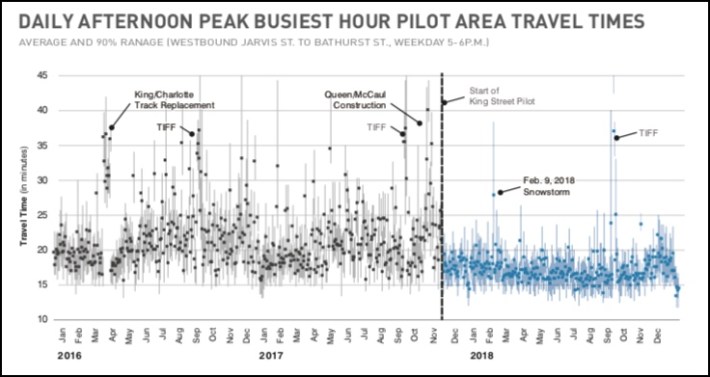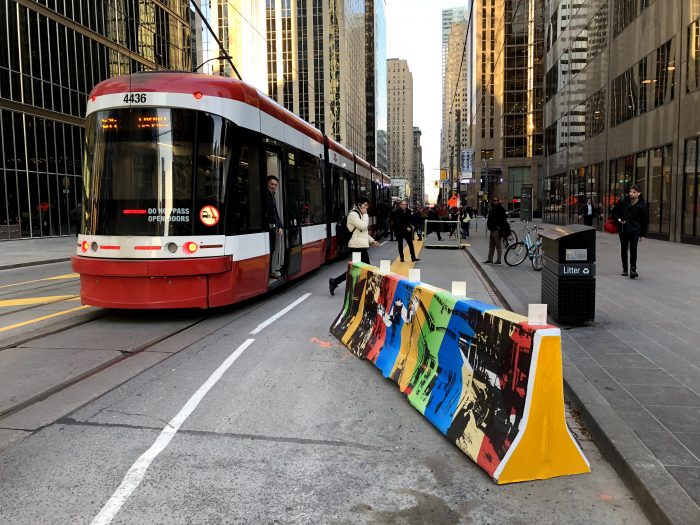In crowded urban areas, cars aren't the most efficient way to move people. That's the lesson from Toronto's one year King Street "pilot," which prohibited through car traffic on the high-ridership streetcar corridor.
New data from the one-year pilot experiment shows the King Street corridor is moving more people than it did before the city cleared cars out to the way. That's because removing car traffic from King Street improved streetcar service so much, ridership has grown 16 percent.
A total of about 84,000 people are using the King Street Streetcar along the east-west corridor daily, the city reports. But only 72,000 people were using the roadway before the street was redesigned to prioritize the streetcar.
The data comes from new report from the city's transportation staff recommending the corridor design be made permanent. The city estimates it will cost just $1.5 million to make the improvements permanent, providing a dedicated lane for existing high-capacity surface transit one of the best transit investments available to cities.
Not only is the streetcar moving more people, thanks to its dedicated lane, riders are happier with service as well. The King Street Pilot resulted in about 30,000 minutes saved by riders daily, the city reports. It was especially effective reducing major delays. The slowest average journeys — at the evening rush hour — decreased by five minutes.

"Prior to the pilot, overall customer satisfaction with King streetcar service was low on key measures such as travel time, comfort, and wait time," city staff writes. "Through the pilot period, customer satisfaction on all these measures have significantly improved."
Cycling rates have also increased. There are about 380 more daily cyclists on the corridor at the afternoon peak, according to the city, "likely because reduced motor vehicle volumes made it more comfortable to cycle."
Drivers haven't been duly inconvenienced, the data show. Car travel times on parallel corridors is roughly the same as before the pilot began in January, 2017.
The pilot did show that retail sales were down very slightly, about 0.8 percent, most notably from restaurants. But the city says that reflects a trend that was underway before the pilot. There were a number of very outspoken business owners that opposed the pilot. But, overall, at least according to the city's data, the experiment does not appear to have been the retail apocalypse some predicted and was very positive for tens of thousands of daily streetcar riders.






